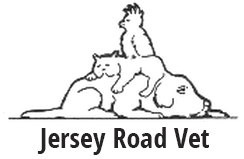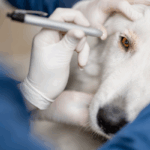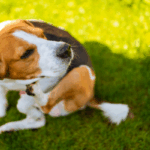Like us, our pets can unfortunately fall victim to the ‘middle-aged spread’ and put on weight. This occurs due to the natural slowing of the metabolism associated with ageing, which can predispose your pet to excessive weight gain. For this reason, depending on the lifestage of your pet, we often recommend varying their dietary and exercise routines, to help ensure they stay at their healthy best!
Puppies and kittens
Puppies and kittens have high-energy and nutrient requirements for growth. However, young puppies and kittens also have small, immature digestive systems.
For this reason, it’s recommended that your puppy or kitten is fed a balanced puppy or kitten veterinary diet designed for growth. These foods have higher energy levels and ensure the correct balance of nutrients such as calcium, phosphate, essential amino acids and vitamins – to ensure your pet develops a healthy musculoskeletal and immune system.
It’s best to keep growing animals in healthy, slim body condition – being underweight means your animal may not grow healthily, and being overweight can worsen certain developmental joint conditions, such as hip dysplasia.
At this age, it’s recommended to not over-exercise puppies (particularly larger breed types e.g. labradors), as they can be at risk of joint damage if exercised too vigorously during growth. As we all know, kittens do what they want exercise-wise, and luckily tend to be pretty hardy!
Adults
When your pet becomes an adult (10-12 months old for cats and smaller dogs, and 18-24 months old for dogs over 25kg), it’s best to transfer them to a high-quality, balanced adult diet, and follow daily feeding guidelines. This will help ensure that your pet does not start to gain weight now that they’re no longer growing.
Consider “indoor”, “neutered” or “healthy weight maintenance” diet types for less active pets. More active adult pets (e.g. working dogs) may require special ‘working dog’ diets to meet their higher energy requirements.
As long as you keep any exercise appropriate for your dog’s physical limitations (e.g. not exercising in hot or humid weather, especially if your pet is snub-nosed, overweight or has other health issues), adult dogs can enjoy most exercise activities freely, such as swimming, running, walks or ball games! Just make sure you gradually taper your pet up to very vigorous exercise, just as you would for yourself.
With indoor cats, aim for two five-minute toy play sessions daily, and encourage access to climbing frames and scratching posts.
Older animals
From eight-to-ten years of age, pets can start to slow down. It’s best to ask our vet team for individual advice regarding the best diet for your elderly pet, as some animals may need to be transferred to a “senior diet” with added joint support, reduced calories, or reduced protein, and some may require special prescription veterinary diets e.g. for kidney disease support.
Older animals should still receive gentle to moderate daily exercise that’s appropriate to their abilities. This helps to keep their muscles strong for joint support and gives them important mental stimulation.
Whatever the lifestage of your pet, please feel free to ask our team for an assessment of your pet, so we can provide more specific advice around their dietary and exercise requirements. Like you, we want your pet to be looking and feeling their best!






